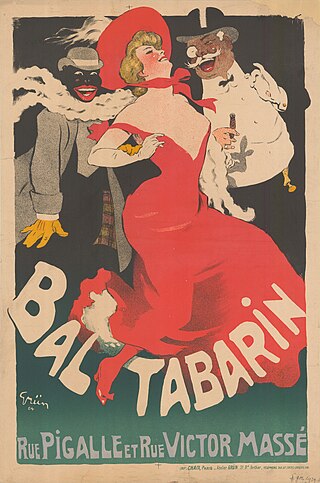
The Virgin Tour was the debut concert tour by American singer-songwriter Madonna. The tour supported her first two studio albums, Madonna (1983) and Like a Virgin (1984). Although initially planned for an international audience, the tour was restricted to the United States and Canada. Warner Bros. Records decided to send Madonna on tour after Like a Virgin became a success. After an official announcement on March 15, 1985, Madonna and her team began production plans. She wanted the tour to be a reflection of her own self and collaborated with designer Maripol for the costumes.

Timothy Ludwig Pflueger was an architect, interior designer and architectural lighting designer in the San Francisco Bay Area in the first half of the 20th century. Together with James R. Miller, Pflueger designed some of the leading skyscrapers and movie theaters in San Francisco in the 1920s, and his works featured art by challenging new artists such as Ralph Stackpole and Diego Rivera. Rather than breaking new ground with his designs, Pflueger captured the spirit of the times and refined it, adding a distinct personal flair. His work influenced later architects such as Pietro Belluschi.
The 5150 Tour was a concert tour by American hard rock band Van Halen in support of their seventh studio album, 5150.
The Farewell Tour was a concert tour performed by the American rock band Kiss. It started on March 11, 2000 and concluded on April 13, 2001. It was the last tour to feature original member Ace Frehley.
The Fair Warning Tour was a concert tour by hard rock band Van Halen in support of their fourth studio album Fair Warning.
The Hide Your Sheep Tour was a concert tour by hard rock band Van Halen in support of their fifth studio album Diver Down.
Audrey Joseph is an American record executive, nightclub owner and manager, and LGBT rights activist.

Cher was the second concert residency by American singer-actress Cher at Caesars Palace in Las Vegas, Nevada. For the three-year engagement, Cher received $60 million. Performing at The Colosseum at Caesars Palace, the first show occurred on May 6, 2008 and the last show was on February 5, 2011. The show included 14 dancers and four aerialists, with a total of 17 costumes designed by Bob Mackie. The residency grossed over $97 million during its three-year run.

David Ferguson was an American international outsider-culture impresario, activist, music producer and concert promoter. Over his career, most of which has been spent on the West Coast, he worked with musical acts such as the Avengers, John Lydon, Billy Bragg, Iggy Pop, Bad Brains, Black Flag, and Butthole Surfers and visual artists Vaughn Bode, Jean-Michel Basquiat, and Barry McGee. Ferguson worked with multi-discipline artists such as avant-garde musician and spoken-word artist Lydia Lunch and the psychedelic drag queen performance group the Cockettes.

The I'm Your Baby Tonight World Tour was a concert tour by American pop/R&B singer Whitney Houston, in support of her multi-platinum album I'm Your Baby Tonight. Prior to Houston performing two dates in Japan early-March, the official tour started on April 18, in North America. Houston's performed nearly 100 concert dates throughout 1991 in North America and Europe.

The Moment of Truth World Tour was the second worldwide tour by American recording artist Whitney Houston and supported her multi-platinum hit album Whitney. The trek started on July 4, 1987 in North America and continued overseas during 1988 in Europe, Asia and Australia.
Tabarin was the street name assumed by the most famous of the Parisian street charlatans, Anthoine Girard.
The Ballbreaker World Tour was a concert tour played by the Australian hard rock band AC/DC, in support of their thirteenth studio album Ballbreaker, which was released on 26 September 1995. This tour had 5 legs around the world lasting 11 months starting on 12 January 1996 in Greensboro, North Carolina finishing on 30 November 1996 in Christchurch, New Zealand.
The Escape Tour was a concert tour by the American rock band Journey in support of their seventh studio album, Escape.

Stoneground was an American rock band formed in 1970 in Concord, California. Originally a trio, Stoneground expanded to a 10-piece band by the time of their eponymous 1971 debut album. The group appeared in two films, Medicine Ball Caravan (1971) and Dracula A.D. 1972 (1972), and released three albums before singer Sal Valentino quit in 1973. Three other band members—Cory Lerios, Steve Price and David Jenkins—left to form pop group Pablo Cruise. Stoneground continued as an act through 1982, with only Tim Barnes and Annie Sampson remaining from the early incarnation of the band. Barnes and Price led a re-formed Stoneground in 2003 and released a studio album the following year.
Agostino "Bimbo" Giuntoli was an Italian-born American nightclub owner and entrepreneur.

Bal Tabarin was the name of a cabaret located at 36, rue Victor-Massé in the 9th arrondissement, Paris, France.
The Back in Black Tour was a concert tour by the Australian hard rock band AC/DC in support of their seventh studio album Back in Black, which was released on 25 July 1980.
The Power Windows Tour was a concert tour by Canadian rock band Rush, in support of the band's eleventh studio album Power Windows.
The Infinity Tour was a concert tour by the American rock band Journey. The tour was in support of their 1978 album Infinity which peaked at #21 on the Billboard 200.









